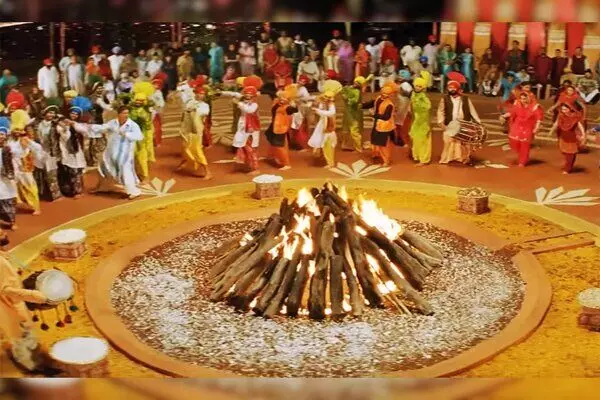End of Winter Solstice, an occasion to celebrate

End of Winter Solstice, an occasion to celebrate
One date has so much significance in India. 14th January is celebrated across India-from north to south, from east to west. The date or rather the time signifies the end of harsh winters and welcoming the spring season and harvest. Scientifically, this also marks the end of winter solstice and transition of Sun into Capricorn (Makar) from Sagittarius (Dhanu). As agriculture has been the backbone of the Indian economy since time immemorial, the harvest season is considered to be an indicator of abundance. The cuisine enjoyed on the festival too is of similar pattern-jaggery or rice based, and vegetable based rice dish. However, what stands unique is that though the reason for celebration is the same, each part of India has a separate name for the same celebration. Let’s see the different names for the festival and how differently it is celebrated.
Makar Sankranti: In Maharashtra and Goa, the festival is called Makar Sankranti. People worship the Sun God. They wear black clothes, exchange tilgul (Sesame and Jaggery) with a wish to speak sweetly to each other. For a fortnight, till Rathsaptami, the custom of exchanging tilgul is continued.
Uttarayan: In Gujarat, this festival is called Uttarayan, and celebrated with much pomp. The kite flying season is loved by Gujaratis. The reason for the same is enjoying some sunlight after strong winters. Apart from vibrant colored kites adorning the sky, jaggery based food, and khichadi, a rice based dish with as many vegetables is also enjoyed.
Thai Pongal: In the southern state of India, Tamil Nadu, this festival is celebrated as Pongal. On this day, Tamilians chant ‘Pongalo Pongal’, which means ‘may rice boil over’, welcoming prosperity and abundance.
Magh Bihu: The North East part India, celebrates Bihu thrice a year, however, Magh or Bhogali Bihu holds special significance. This again indicates the end of the harvest cycle and beginning of new cycles. On the day of Magh Bihu, a traditional Assamese household will have ‘Jolpan’, which means a sweet platter with coconut laddus, rice and jaggery based dish.
Lohri: Lohri is celebrated particularly in Punjab. The state has been predominantly agrarian state and thus Lohri is one of the biggest festivals there. Bonfires are lit in open spaces wher people gather and celebrate together. Lohri usually falls a day before Sankranti or sometimes celebrated with Sankranti.
Other states also celebrate this day with other names like Khichadi Parv in Uttarnchal and Uttar pradesh, Suggi Habba in Karnataka, Poush Songkranti in West Bengal, Makar Chaula in Odisha, Shishur Saenkraat in Kashmir. Madhya Pradesh Gajak and Rewdi or Maharashtra’s Tilgul, Indian culture never fails to give us specific culinary delights of each festivals.
Happy Harvest Season!

